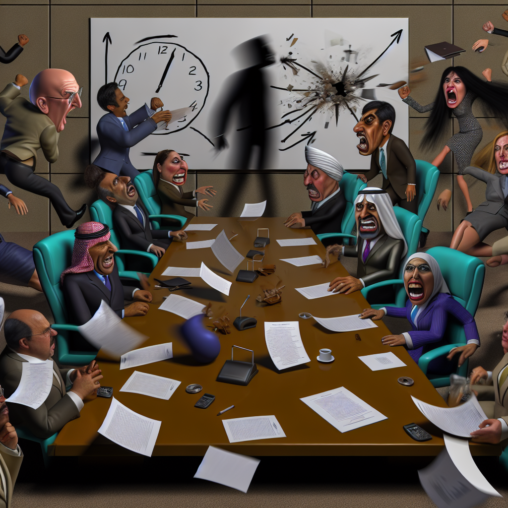Trump’s Cabinet Turmoil and Growing Issues in His Administration
The Trump administration has once again found itself embroiled in another wave of controversies, this time centered around the internal drama within his Cabinet and a troubling infestation of dysfunction that appears to plague his administration. As 2024 unfolds, these issues are not only raising eyebrows among political insiders but are also sparking concerns about the broader implications for governance and policy implementation.
A Cabinet in Chaos
One of the most glaring issues facing former President Donald Trump’s administration is the persistent turmoil within his Cabinet. Reports suggest that a number of Cabinet members are either clashing with each other or are at odds with their boss. This level of discord is unusual even by the standards of a Trump-led White House, where internal rivalries and revolving doors have been the norm since his first term.
Key sources close to the administration have described an environment rife with tension and mistrust. Allegations of backstabbing, power plays, and policy disagreements have become commonplace, making it challenging for the administration to present a unified front. Among the most pressing concerns:
- Frequent Turnover: Trump’s Cabinet continues to see an unprecedented level of turnover. High-profile officials have either resigned, been fired, or been quietly reassigned, leaving critical positions either unfilled or under the stewardship of interim appointees.
- Policy Paralysis: The lack of cohesion among Cabinet members has directly impacted the administration’s ability to implement cohesive policies, particularly in areas like foreign affairs and domestic economic strategies.
- Infighting: The infighting is not just limited to disagreements over policy; it extends to personal animosities that have spilled over into public view, further eroding trust within the administration.
The Infestation of Dysfunction
Beyond the Cabinet drama, reports also point to a deeper, more systemic issue within the Trump administration—what some insiders are calling an “infestation of dysfunction.” This refers to the pervasive lack of organization, discipline, and accountability that has come to characterize Trump’s leadership style.
Lack of Clear Leadership
One of the root causes of this dysfunction is the former president’s management approach. Trump has long been known for his preference for chaos, often pitting staff against one another and avoiding delegation of authority. While this may have worked in the private sector, it has proven disastrous in the realm of governance. Key symptoms of this dysfunction include:
- Ad Hoc Decision-Making: Decisions are often made on the fly, with little consultation or strategic planning, leading to confusion and miscommunication.
- Unqualified Appointees: Critics argue that Trump has prioritized loyalty over competence, appointing individuals with limited experience or expertise for crucial roles.
- Ethical Concerns: Allegations of corruption and conflicts of interest have further undermined confidence in the administration’s ability to govern effectively.
Impacts on Governance
This infestation of dysfunction is not merely an internal problem; it has profound implications for the governance of the country. Policies are being delayed or poorly executed, critical issues are being ignored, and public trust in government institutions continues to erode. Furthermore, this lack of stability has made it difficult for the administration to maintain constructive relationships with Congress, leading to legislative gridlock in several key areas.
The Bigger Picture
While some may dismiss these issues as par for the course in a Trump administration, the stakes are higher than ever as the nation faces a range of complex challenges, from economic uncertainty to geopolitical tensions. The ongoing Cabinet turmoil and administrative dysfunction serve as a stark reminder of the importance of strong, stable leadership, particularly in times of crisis.
To address these issues, Trump would need to take decisive action to restore order within his administration. This would likely involve appointing qualified individuals to key positions, fostering a culture of collaboration and accountability, and adopting a more disciplined approach to governance. However, given his track record, it remains to be seen whether such changes are forthcoming—or even possible.
Conclusion
As the drama within Trump’s Cabinet continues to unfold, it serves as a microcosm of the broader challenges facing his administration. The combination of internal discord, systemic dysfunction, and a lack of clear leadership has created a perfect storm of instability that threatens to undermine not just his presidency but the nation’s ability to effectively address pressing issues. While Trump’s supporters may view this as business as usual, the long-term consequences of this turmoil could be far-reaching, affecting not just the administration but the future of American governance as a whole.

